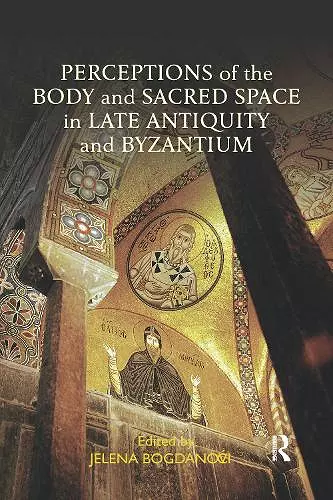Perceptions of the Body and Sacred Space in Late Antiquity and Byzantium
Format:Paperback
Publisher:Taylor & Francis Ltd
Published:30th Jun '20
Currently unavailable, and unfortunately no date known when it will be back
This paperback is available in another edition too:
- Hardback£155.00(9781138561045)

Perceptions of the Body and Sacred Space in Late Antiquity and Byzantium seeks to reveal Christian understanding of the body and sacred space in the medieval Mediterranean. Case studies examine encounters with the holy through the perspective of the human body and sensory dimensions of sacred space, and discuss the dynamics of perception when experiencing what was constructed, represented, and understood as sacred. The comparative analysis investigates viewers’ recognitions of the sacred in specific locations or segments of space with an emphasis on the experiential and conceptual relationships between sacred spaces and human bodies. This volume thus reassesses the empowering aspects of space, time, and human agency in religious contexts. By focusing on investigations of human endeavors towards experiential and visual expressions that shape perceptions of holiness, this study ultimately aims to present a better understanding of the corporeality of sacred art and architecture. The research points to how early Christians and Byzantines teleologically viewed the divine source of the sacred in terms of its ability to bring together – but never fully dissolve – the distinctions between the human and divine realms. The revealed mechanisms of iconic perception and noetic contemplation have the potential to shape knowledge of the meanings of the sacred as well as to improve our understanding of the liminality of the profane and the sacred.
‘[The book is] ... an enlightening journey through the early Christian Mediterranean mentalities in relation to how the connection between body and sacred space was seen and represented, and a well-documented and rich source for any scholar interested in this period - Ecaterina Lung, Hiperboreea, Volume 8, No. 1 (2021).
‘Each of the eight contributors shows in a different way how art, design, and architectural space could help transform the human body into a vehicle of the divine. Icons and the spaces they occupied had a real presence facilitated by shimmering surfaces; they demanded that believers should move bodily through constricted or open spaces, and they rewarded the pious who gazed upwards with animated manifestations of the heavenly realm’ – Time and Mind, Volume 12, Issue 3 (2019).
ISBN: 9780367592530
Dimensions: unknown
Weight: 453g
240 pages